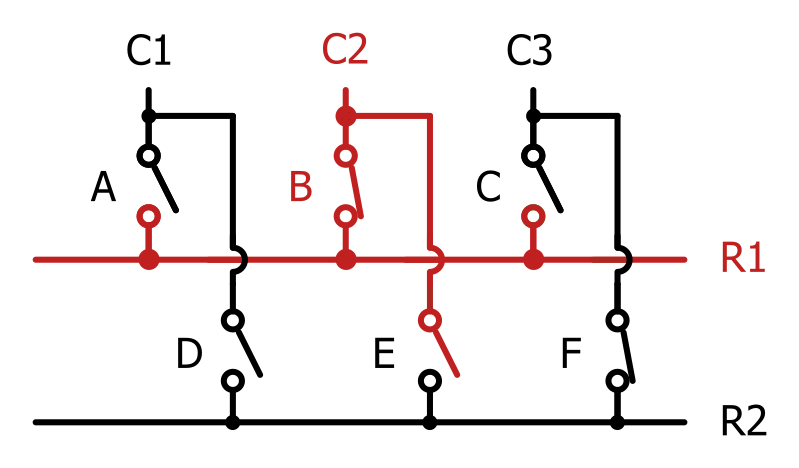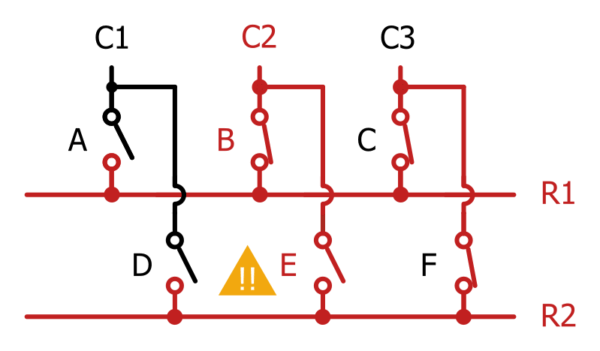N key rollover plays a giant role when it comes to mechanical keyboard and maximizing your typing or gaming experience. So, let’s explore what these terms mean and what you need to know about them.
Keyboard N-Key Rollover Test
Press any key on your keyboard
Keypress Count:
In a nutshell, key rollover is the number of keys that can be pressed simultaneously and still be registered by the keyboard.
N-key rollover, on the other hand, is the ability of a keyboard to correctly recognize and register any key pressed regardless of how many other keys are being pressed simultaneously.
In other words, with n-key rollover, you can press and hold as many keys as you want, and the keyboard will still maintain accurate registration of each one.

What is N-Key Rollover?
Key rollover is a term that indicates the maximum number of keys that a keyboard can record at once. Instead of being labeled as an absolute number, it is written as x-key rollover with x being the key count.
This is a guarantee that any combination of up to x keys will be recognized and functioning properly.
N-key rollover denotes keyboards with an unlimited number of keys where hypothetically any amount of keys could be pressed at once.
What if I exceed the Rollover Limit?
A keyboard’s rollover (or anti-ghosting) limit determines how many keys can be pressed simultaneously without any of the keys being unrecognized or registered incorrectly.
Up to the limit, all pressed keys will be correctly detected and registered, however when the limit is exceeded, one of the three following outcomes can occur:
- Incorrect registration – An additional key is registered, even though that key was not pressed. This is known as ghosting.
- Key is not registered – One of the pressed keys is not registered at all. This is usually seen as a measure from keyboard controllers in order to prevent ghosting. This is called blocking.
- Key combination works correctly – The key combination is registered correctly and no issues occur. It is possible for some combinations to work correctly, even if they exceed the keyboard’s rollover limit. However, it is also important to remember that this limit is in place and exceeding it could lead to ghosting or blocking.
Some Common Types of Rollovers
Mechanical keyboards offer several types of rollover, the most common being 2-key rollover (2KRO), 6-key rollover (6KRO), 10-key rollover (10KRO), 14-key rollover (14KRO), 22-key rollover (22KRO) and Full n-key rollover (NKRO).
Through these varying rollover capabilities, the keyboard can recognize and report multiple key presses at a time, making it easier and more accurate to type and input commands simultaneously.
Key Rollover Limit When Playing Video Games
Most gaming applications don’t need more than 6-key rollover (6KRO) to function properly.
That being said, in some particularly complex simulations and games where many keys have to be pressed at once, 6KRO may not be enough and you may need to consider a higher rollover number. For most single player use cases (like gaming or typing), 6KRO is completely sufficient.
The surge in n-key rollovers found in gaming keyboards is often attributed to marketing efforts, rather than actual demand. It should be noted that 10-key rollover (10KRO) should be enough for all use cases, including multiplayer games with multiple players on a single platform.
Generally speaking, it is difficult to press more than 10 keys at once using only 10 fingers, hence the need for a higher rollover should be limited.
As such, if you’re just looking to play a few single player games or use it for typing, then 6KRO/ 10KRO should be more than enough.
How Key Rollover Technically Work
In order to comprehend why all keyboards do not come with an n-key rollover, it is essential to consider the essential functional principles. Keyboards are connected using a grid of wires commonly referred to as a ‘keyboard matrix’.
This grid comprises of a variety of rows and columns, thus completing the formation of the keyboard.

To ascertain which keys have been pressed, a current is applied to each column consecutively. Each individual key acts as a momentary switch, if it is pressed then the associated circuit is completed. By checking the current of each row, the keyboard controller can determine if any particular key has been pressed.
Example for 2-key Rollover Limit:
The keys B and F are pressed, and this can be detected by the keyboard controller. When current is applied to the first column (-> red color), it is determined that neither A nor D are pressed as there is no closed circuit. In the second column, the switch by B is closed, which results in current flowing through row R1. This lets the controller recognize that the key corresponding to C2/R1, which is the letter B, is pressed. Similarly, in column C3, the switch by F is closed, causing current to go through R2, allowing the keyboard controller to register the letter F.



Multiple keys pressed at the same time can cause new and undesired pathways to be created. This leads to current that is flowing through the wrong rows and registers keys that have not been pressed, which is known as “ghosting.” In other words, if multiple keys are pressed simultaneously it can lead to unintended effects.
Example for 3-key Rollover Limit:
When current is applied to the second column, the illustration below shows the results. In this scenario, where B, C, and F are all pressed, current flows through the connections of B, C, and F to row R2. From the point of view of the keyboard controller, it appears as if both keys B and E are depressed – though only B is actually pressed. Key E is then detected erroneously.

To prevent ghosting, keyboard controllers can be set to disregard combinations of keys that could form an unintended circuit.
Even though this measure might help reduce the possibility of dealing with errant keys, it also means that some inputs cannot be registered.
To address this concern, manufacturers often design the keyboard matrices in such a way that standard key combos in the W-A-S-D region won’t miss out on registering.
Using diodes is a surefire solution for totally eliminating ghosting and blocking. A diode permits the current to pass in one direction but blocks it from going the other way.
So when a diode is placed behind each switch, it guarantees that the wrong flow of current won’t take place – which is why N-key rollover keyboards make use of this technique.
How to test my Keyboard’s Rollover Limit?
Are you uncertain about the rollover capabilities of your keyboard or interested in finding out what the manufacturer’s specifications are? Look no further!
Our above Online Key Rollover Test is an easy way to check the maximum number of keys that can be registered at the same time.
Not only that, but it also allows you to test any key combinations that you want to ensure that the registration is correct. All of this can be done from inside your browser, making it fast and convenient.
What is anti ghosting?
When buying a new mechanical keyboard, anti-ghosting is a term you are likely going to come across. Anti-ghosting usually indicates that the keyboard matrix has been optimized to reduce the likelihood of ghosting or blocking when used for gaming.
Unfortunately, it is difficult to determine exactly what actions have been taken, so it is best to simply rely on the 6-key-rollover or higher as the safest option.
Why N-Key Rollover is important?
N-key rollover is important because it allows multiple keyboard presses to be registered simultaneously and accurately.
Without it, a keyboard would not be able to accurately tell which simultaneous keystrokes were intentional and which were accidental.
This can be vital for gaming, where complex and fast key sequences can be the difference between victory and defeat.
N-key rollover ensures that all keystrokes are registered accurately and quickly.
